Amazon Fire TV Recast Review: The Ultimate DVR for Cord-Cutters
This small black box connects to an HD antenna and lets you record over-the-air broadcasts.

One drawback to cord-cutting is that HD TV antennas lack a way to record programs, so you can’t, say, pause that football game mid-play to run downstairs to grab a beer. Amazon's Fire TV Recast is the latest product that seeks to solve this problem.
This device (starting at $229; $279 as reviewed) lets you record over-the-air broadcasts and play them back at your leisure. More than that, it integrates seamlessly with Amazon's Fire TV interface, making it a great choice for those who have ditched cable but want one of its biggest benefits.
Editor's note: In August 2022, Amazon announced it was discontinuing the Fire TV Recast, but will support security updates through 2026. You might still be able to find them while supplies last. In the meantime, check out our list of the best streaming devices and best streaming services.
How it works
The Recast is a fairly nondescript black box measuring 7.1 x 7.1 x 2.9 inches. On the back is a coaxial port for the antenna, Ethernet, USB 3.0 and power. The USB port can't be used for anything at the moment, but Amazon said that an update will allow users to add an external hard drive to increase the storage capacity.

The Recast receives TV signals from an HD antenna, and then sends them via Wi-Fi to a Fire TV device; inside the Recast is a hard drive, which can be used to save OTA recordings as well.
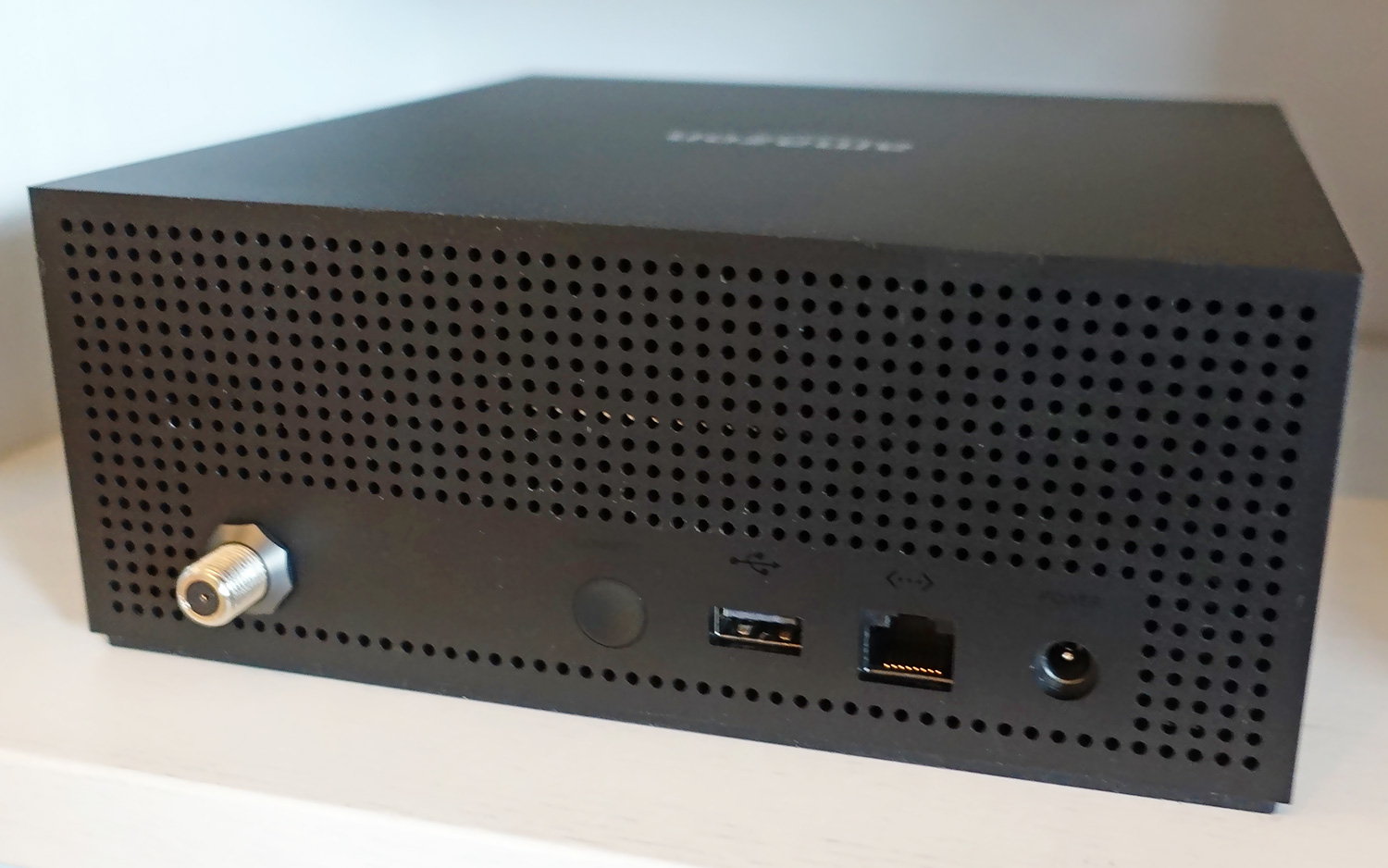
To use the Recast, you'll need a Fire TV stick or Amazon Echo Show, an HD antenna and the Fire TV app for your smartphone. After hooking up the Recast to your HD antenna, you connect to the Recast via Wi-Fi, then connect it to your home network.
Because the Recast streams video via Wi-Fi to your Fire TV stick, you can set up the Recast pretty much anywhere in your home. This is helpful because you'll want to place the antenna (to which the Recast is attached) where you get the best reception. In my house, this meant my finished attic, where the Recast was able to find 61 channels; this will vary based on your location and the antenna you have.
Get instant access to breaking news, the hottest reviews, great deals and helpful tips.
MORE: Best Streaming Devices and Services - Music, Movies & TV
In all, setup took about 5 to 10 minutes. It can take a few minutes for the Recast to discover all the channels available in your area.
Performance
Once everything is up and running, the home screen of the Fire TV interface displays two new items: "DVR" appears along the top ribbon, while "On Now" listings appear further down. Each has a thumbnail image and a progress bar at the bottom, showing roughly how much time is left in the program.
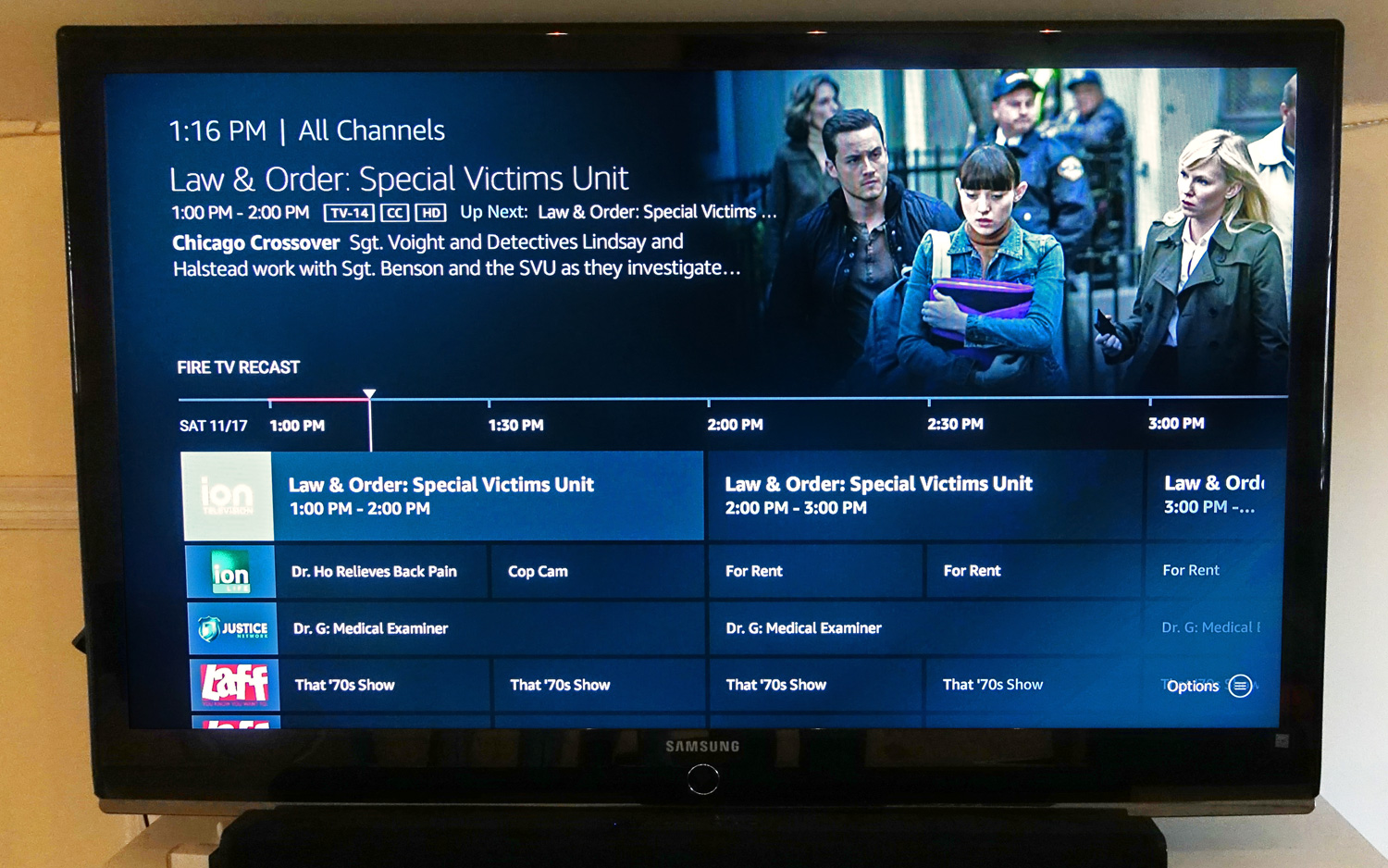
If you select DVR, it will also show thumbnails of programs airing. Scroll down the page, and you can pull up a channel guide; I wish there were an easier way to get to it.
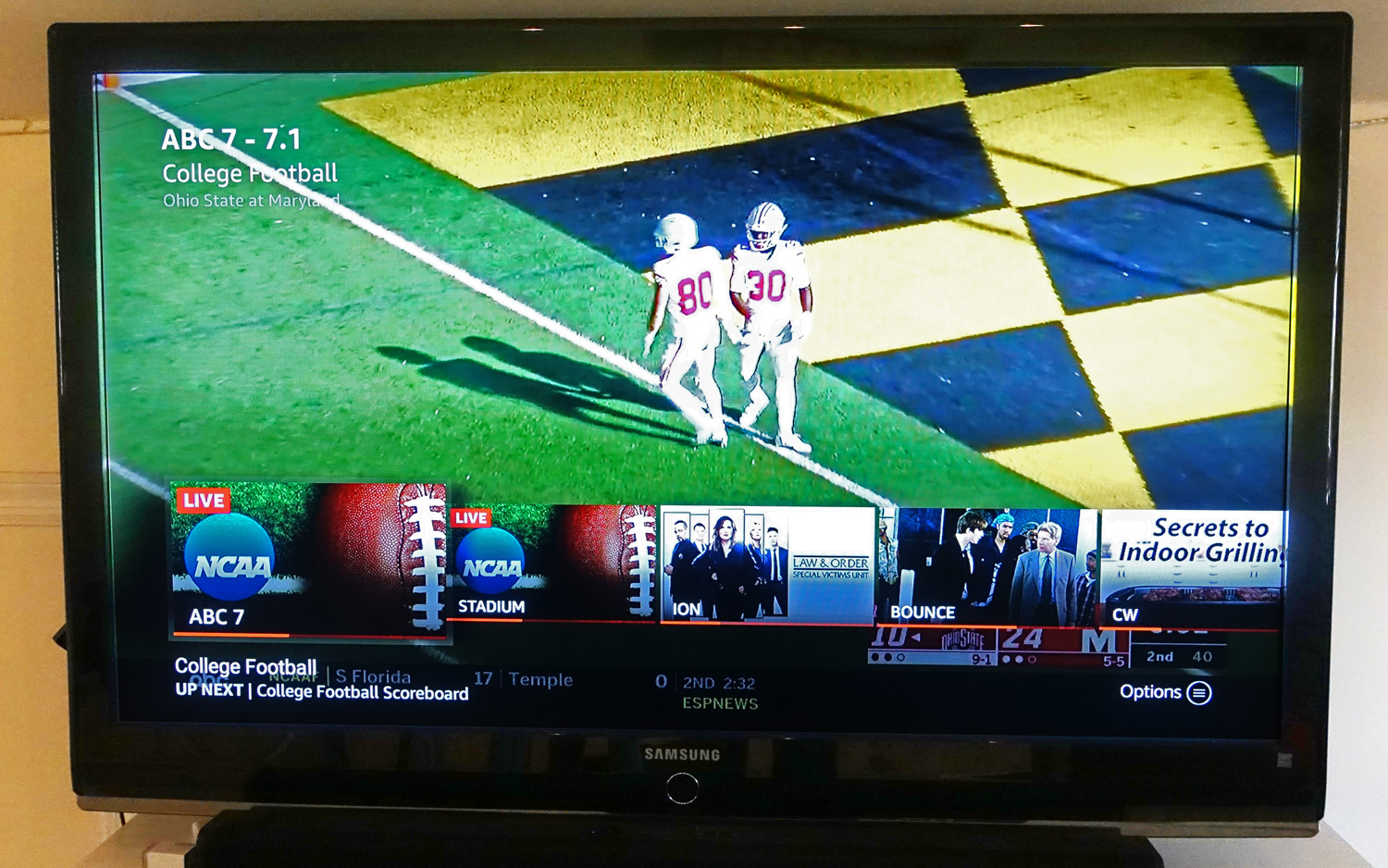
As you're watching a program, you can also pull up a ribbon of all the other programs currently showing. It's helpful for those who like to channel surf.
Pressing the hamburger menu lets you pull up the channel guide. I like that I could view the current program I was watching while also looking at the full menu guide.
As with other DVRs, you're given options to record both individual shows and series. You can also pause programs you're watching, and then fast-forward or rewind. Cleverly, the Recast gives you the option to automatically extend the recording times for sporting events.
MORE: Your Guide to Cable TV Cord-Cutting
This being an Amazon product, you can use Alexa to open the channel guide, schedule recordings and find programs by title, actor, genre and more. Doing so will display results not just from over-the-air programs, but from streaming services as well.
Fire TV app
In addition to viewing content on a Fire TV device, you can also stream content to your smartphone or tablet (iOS, Android, and Amazon) via the Fire TV app.
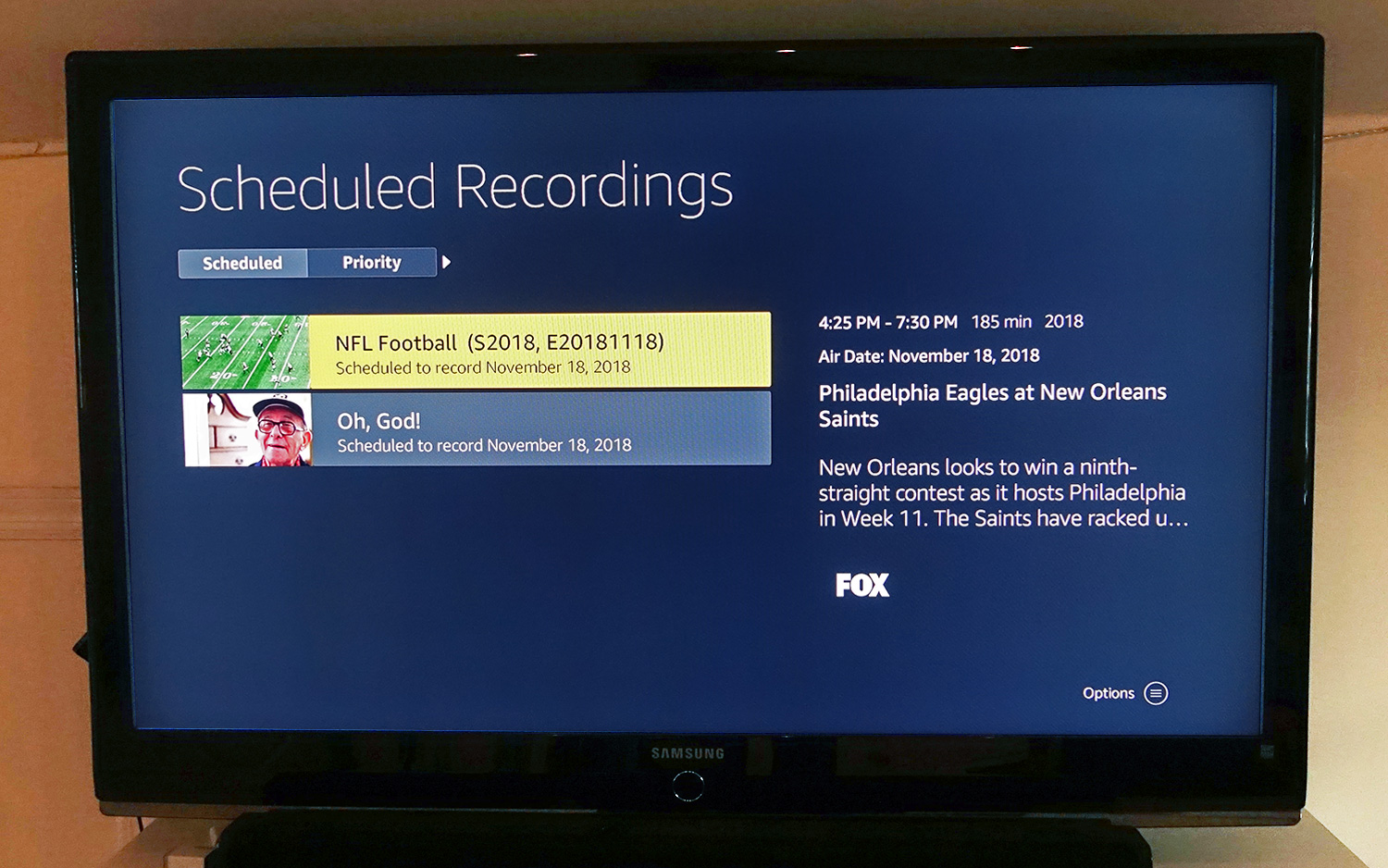
The home screen of the Fire TV app shows the programs airing; they're displayed as tiles, with program information below, and a progress bar shows how much time remains. Here, you also are given the option to record the show. I wish there were a traditional grid view, too.
Another tab displays your recorded programs, while a third icon turns your device into a remote control. Just about the only thing you can't do with the app is download saved programs to your mobile device.
Configurations: How much does the Fire TV Recast cost?
Amazon is selling two versions of the Recast: A model with two tuners and a 500GB hard drive (good for 75 hours of recordings) is $229, while a model with four tuners and a 1TB drive (good for 150 hours) is $279. Regardless of which model you choose, though, you can stream video to only two devices at the same time.
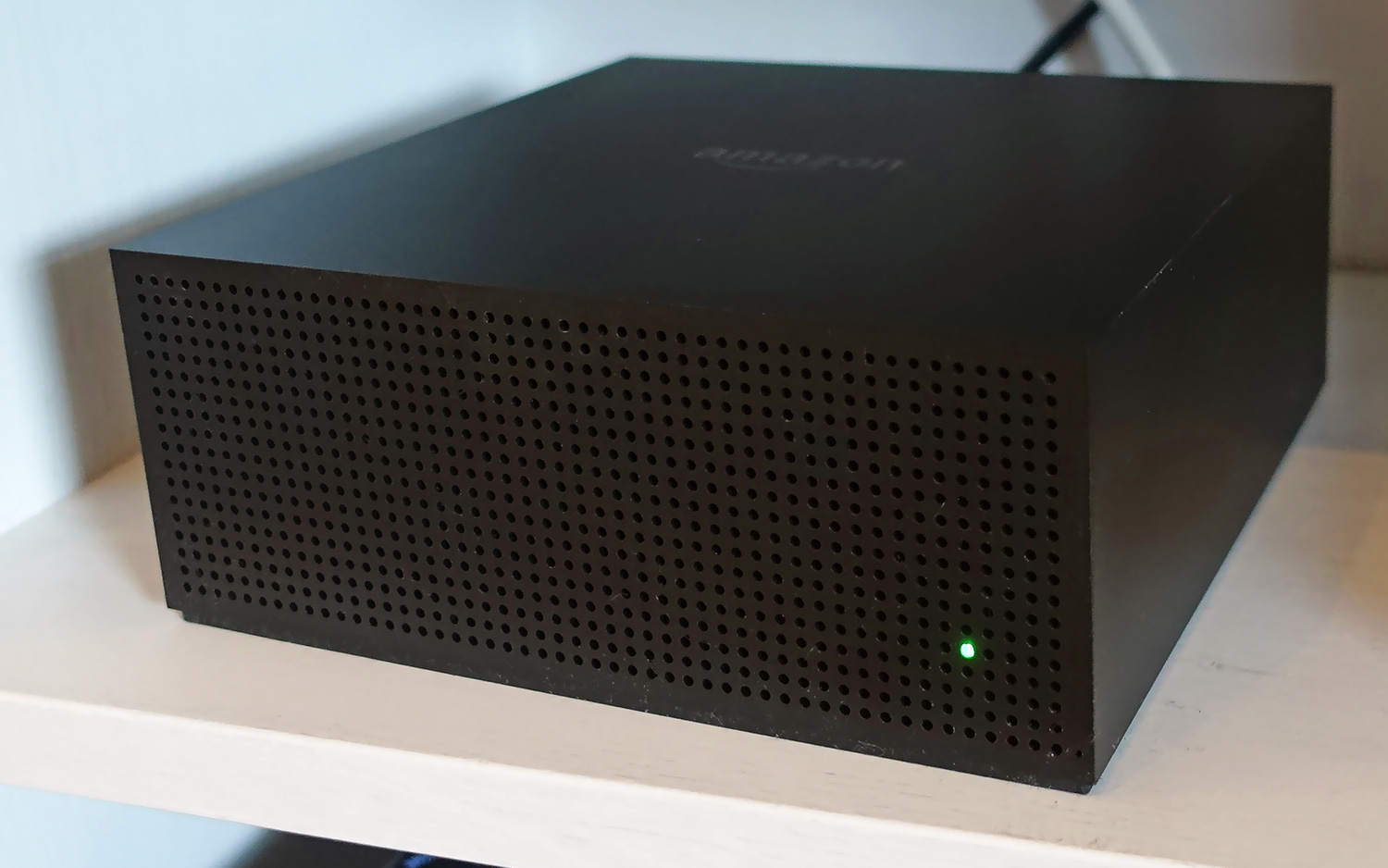
Amazon is also selling the 2-tuner Recast in a bundle with a Fire TV Stick 4K and an HD antenna for $249. That's a pretty good deal, considering the Fire TV stick on its own is $49, and a decent HD antenna will cost around $20.
The competition
The Recast is not the first device that lets you save OTA broadcasts. TiVo Bolt OTA, which has four tuners, can store up to 150 hours of programming on a 1TB drive, streams in 4K, and can stream video from such services as Netflix, Prime Video, Hulu, YouTube and Plex.
BOLT OTA searches across popular apps, plus your recordings and live TV simultaneously.
However, in addition to purchasing the device itself ($249), you'll also have to cough up a subscription fee of $6.99/month, or $69.99/year.
Tablo's 4-tuner OTA DVR ($199) and 2-tuner Dual Lite ($140) don't require a subscription ($4.99/month, $49.99/year, or $149.99 for a lifetime membership), but without it, you can’t get a 14-day channel guide. You also need to provide your own hard drive to record programs. However, it works with a plethora of streaming devices, including Apple TV, Amazon Fire TV, Google Chromecast, LG and Samsung smart TVs, Roku and Xbox One consoles.
Bottom line
The Recast is a great accessory for those who want to add DVR-like capabilities to their over-the-air broadcasts. While you're locked into using a Fire TV device, the two integrate seamlessly. Even better, it has a Sling-like ability to stream your local broadcasts to your smartphone, no matter where you are. Unless you're a heavy TV user, you can probably get away with the $229 model. But whatever option you choose, you'll like what you get.
Credit: Tom's Guide

Michael A. Prospero is the U.S. Editor-in-Chief for Tom’s Guide. He oversees all evergreen content and oversees the Homes, Smart Home, and Fitness/Wearables categories for the site. In his spare time, he also tests out the latest drones, electric scooters, and smart home gadgets, such as video doorbells. Before his tenure at Tom's Guide, he was the Reviews Editor for Laptop Magazine, a reporter at Fast Company, the Times of Trenton, and, many eons back, an intern at George magazine. He received his undergraduate degree from Boston College, where he worked on the campus newspaper The Heights, and then attended the Columbia University school of Journalism. When he’s not testing out the latest running watch, electric scooter, or skiing or training for a marathon, he’s probably using the latest sous vide machine, smoker, or pizza oven, to the delight — or chagrin — of his family.
-
chermassey Replymprospero said:This small black box connects to an HD antenna and lets you record over-the-air broadcasts.
Amazon Fire TV Recast Review: The Ultimate DVR for Cord-Cutters : Read more
I bought it and I love it - BUTTTT, I am wondering how much data I am using to run it per day/per month? If I connect my antenna directly to my TV, I am using nothing, which is where I'd love to stay. Do you know how much data it uses per month?
